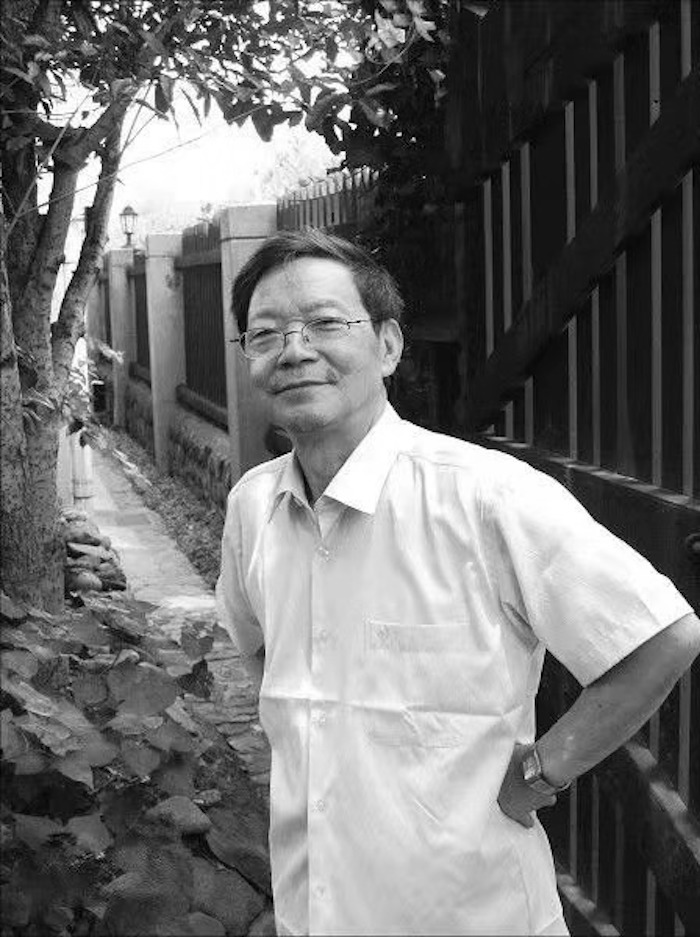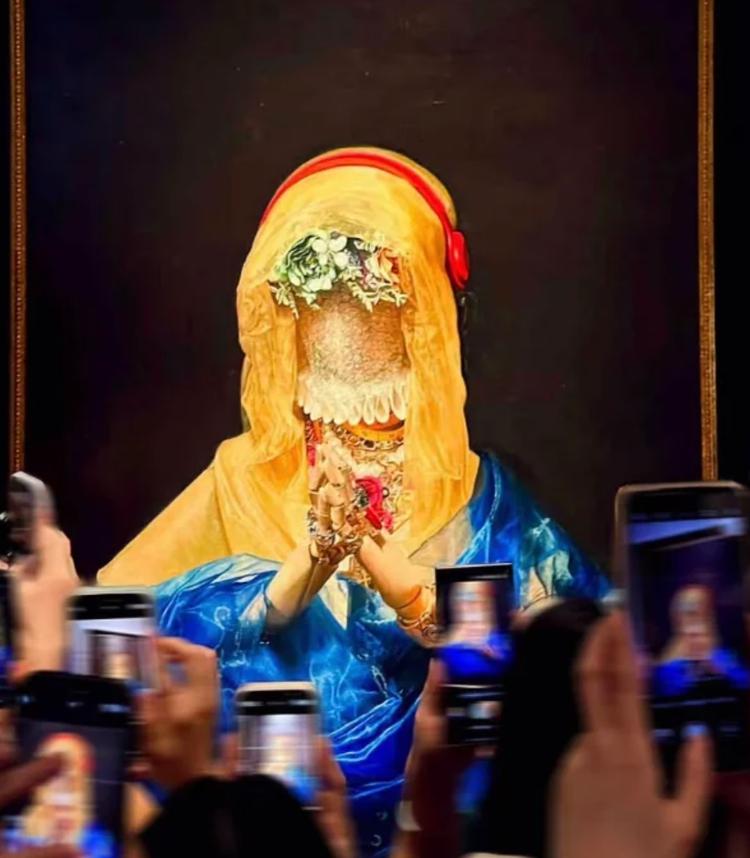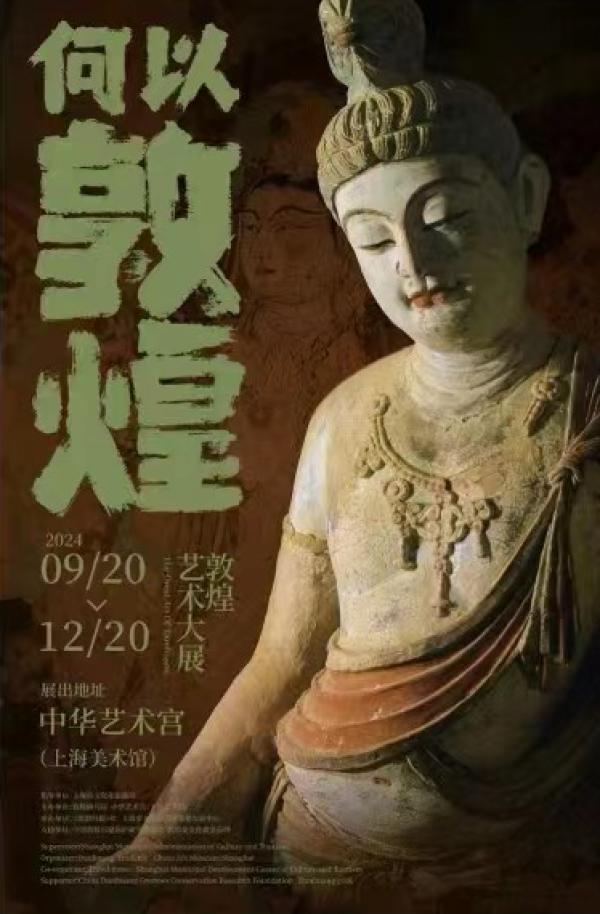
Fang Zengxian (1931-2019), a well-known artist and former director of the Shanghai Art Museum, is the founder and promoter of the "New Zhejiang School of Figure Painting" and the founder of the Shanghai Biennale. After the early Shanghai Biennale was completed, Fang Zengxian commented on a watercolor work by a Dutch artist: "I don't like this work. But just because I don't like it doesn't mean I can't do it; I don't like it, but there may be others who like it."
The Paper learned that Fang Zengxian Art Research Center was established at Shanghai Normal University on June 28. Fang Zengxian's art exhibition will be held at the China Art Palace (Shanghai Art Museum) next year.

Fang Zengxian (1931-2019)

Cao Guangming and Fang Zihong (right), son of Fang Zengxian, unveiled the Fang Zengxian Art Research Center.
It is reported that the Fang Zengxian Art Research Center was initiated and established by the School of Fine Arts of Shanghai Normal University. Cao Guangming, member of the Standing Committee of the Party Committee and Chief Accountant of Shanghai Normal University, and Fang Zihong, son of Fang Zengxian, unveiled the art research center. Feng Yuan, Yu Xiaofu and 34 other experts from Beijing, Shanghai, Hangzhou and other places were hired as consultants and researchers of the Fang Zengxian Art Research Center.
Fang Zengxian was born in Lanxi, Zhejiang. He is known as a leader in realistic Chinese figure painting in the second half of the 20th century, especially the founder and promoter of "New Zhejiang School of Figure Painting". Fang Zengxian graduated from Zhejiang Academy of Fine Arts (now China Academy of Art). His representative works "Earth of Every Grain of Rice", "Talking about the Red Book" and "Mother" have become models of figure painting in New China. His monograph "How to Draw Ink Figure Painting" has influenced later Chinese painters.

Fang Zengxian, Talking about the Red Book, 1964
In addition to artistic creation, Fang Zengxian has also served as the director of the Shanghai Art Museum, honorary professor of the China Academy of Art, chairman of the Shanghai Artists Association, and president of the China National Academy of Painting. He has actively promoted the implementation of the Shanghai Biennale and made important contributions to promoting the innovation and diversified development of Chinese contemporary art. He has won honors such as the "China Art Award·Lifetime Achievement Award" and the "Shanghai Literature and Art Award·Lifetime Achievement Award".
At the seminar after the unveiling ceremony, many experts in attendance had contact with Fang Zengxian. They recalled Mr. Fang’s teaching time at the Zhejiang Academy of Fine Arts, recalled his past at the Shanghai Art Museum, and talked about the current significance of the "New Zhejiang School of Figure Painting."

Fang Zengxian, Mother, 1988
"New Zhejiang School Figure Painting" is not a concept
Fang Zengxian studied oil painting in his early years. After entering the Chinese Painting Department of Zhejiang Academy of Fine Arts, he felt lost. He wrote in a self-introduction: "Figure painting is a 'species' that has long been marginalized in the Chinese painting world. This is an unexpected mission. In figure painting, everyone hopes to take a new path, but no one knows how to go." It was in this state of "sense of mission" and "uncertainty" that Fang Zengxian began to explore figure painting creation.

Fang Zengxian, Every Grain of Rice Is Hard-earned, 1955 (reproduced in 1978)
Yu Yang (Deputy Director of the Theoretical Committee of the China Artists Association and Director of the Research Department of the Central Academy of Fine Arts) mentioned in his speech that the "New Zhejiang School of Figure Painting" came from the tradition of Zhejiang Fine Arts Flower and Bird Painting and created a number of classic works. "But after the 1980s, Fang Zengxian reflected on his early works based on the relationship between brush and ink and sketching. He kept breaking the problem, and his reflection on whether excessive sketching had an impact on the modeling of brush and ink figures still needs to be explored."

Fang Zengxian in front of the work
Yu Xiaofu (consultant of Shanghai Artists Association, honorary dean of Shanghai Normal University Academy of Fine Arts) and Xu Mangyao (former dean of Shanghai Normal University Academy of Fine Arts), both oil painters, interpreted the solid modeling of Fang Zengxian's figure paintings from the perspective of oil painting. Xu Mangyao believes that Fang Zengxian's figure paintings combine traditional Chinese painting with Western art; Yu Xiaofu said that Fang Zengxian's influence is not only on Chinese painting, and while studying him, we must also learn and apply it flexibly.

Fang Zengxian's 1964 study
He Jiaying (former vice chairman of the China Artists Association and professor at the Chinese Academy of Arts) saw more of the inheritance of Chinese painting in Fang Zengxian's figure paintings. He took a practice painting by Fang Zengxian in 1964 as an example to talk about the use of brushwork, structure and gray tones in the work. He especially mentioned that the depiction of the figure's ears was inspired by Ren Bonian, and the lines were connected in spirit and rhythm to form a vivid system.

Young Fang Zengxian (right) and his wife Lu Qihui visiting Mr. Wang Geyi
Han Shuo (Director of the Art Committee of Shanghai Chinese Painting Academy) recalled that he once used Fang Zengxian's "How to Draw Ink Figures" published in 1963 as a textbook, and believed that it had a great influence on later ink figure creation.

Fang Zengxian (first row, second from right) at Zhejiang Academy of Fine Arts (now China Academy of Art) in the 1980s
Wu Xiansheng (Professor at China Academy of Art), Fang Zengxian's assistant teacher at Zhejiang Academy of Fine Arts, recalled the first time he met Fang Zengxian in 1977. "He came with his then class teacher Wu Shanming. I didn't expect that the person who painted such a magnificent work was a short man." In his daily interactions with Fang Zengxian, he also felt his rigor in his academic research, and he could always see a large number of sketches and manuscripts in his studio.
Feng Yuan (Deputy Director of the Central Research Institute of Culture and History, Honorary Chairman of the China Artists Association), as Fang Zengxian's student, recalled Fang Zengxian's selfless help during his school years and admitted that he would not be who he is today without Fang Zengxian.

Fang Zengxian is demonstrating teaching
Founded the Shanghai Biennale when he was the director of the Shanghai Art Museum
Fang Zengxian returned to Shanghai in 1983 and joined the Shanghai Chinese Painting Academy, and later served as the vice president of the Shanghai Chinese Painting Academy. From 1983 to 1985, he went to Tibet for sketching many times. In 1985, he served as the director of the Shanghai Art Museum. In 1999, he was elected as the vice chairman of the Shanghai Federation of Literary and Art Circles and the chairman of the Shanghai Artists Association.
Zhu Guorong (former vice chairman and secretary general of the Shanghai Artists Association) recalled that he worked with Fang Zengxian in the Shanghai Artists Association from 2000 to 2007. In his spare time, Fang Zengxian often discussed with him about the brushwork of "Lanting Preface". His research on calligraphy influenced his brushwork in painting. His creations during the Tibetan period can be used as research topics in the future.

In 1983, Fang Zengxian was on his way to sketch in Yushu Tibetan Autonomous Prefecture, Qinghai Province.

"Hometown Bench Dragon" (detail), 2002
As the director of the Shanghai Art Museum, Fang Zengxian has had a profound influence on the development of Shanghai's art industry. He founded the first Shanghai Biennale in 1996. As for the origin of the Shanghai Biennale, painter Li Lei recalled that Mr. Fang went around the Venice Biennale at the time and felt that foreign art was different, so he tried to do it himself. Li Lei clearly remembers that after the early Shanghai Biennale was completed, Fang Zengxian commented on a watercolor work by a Dutch artist: "I don't like this work. But just because I don't like it doesn't mean I can't do it. It must be very important in the Western system for a reason. I don't like it, but maybe someone else does."

The Shanghai Biennale, held at the Shanghai Art Museum at 325 Nanjing West Road in 2000, was the first exhibition to be curated by a team of Chinese and foreign curators.
In Li Lei's view, Fang Zengxian was a pioneer of modern art museums in China. Before he became the director, art museums were "exhibition halls". It was he who proposed that art museums should collect and conduct research, and recruited some young people who had just graduated to do research in the museum.

Fang Zengxian in front of the Shanghai Art Museum
Jiang Mei (President of Shanghai Oil Painting and Sculpture Institute) was one of the young people who joined the museum at that time. After graduating in 1996, she worked in the academic department of Shanghai Art Museum for 19 years. She particularly remembers that the first time she met Mr. Fang was at the academic seminar of the first Shanghai Biennale. In her opinion, in this first international biennale held by Chinese people themselves, the theme and artists invited were determined based on their own cultural development needs. The significance of the Shanghai Biennale is that it has changed the embarrassing situation of Chinese artists being selected on the international art stage for a long time, and has enhanced the status and cultural image of Chinese contemporary art on the international contemporary art stage.

2023, "14th Shanghai Biennale: Cosmic Cinema" exhibition site
Other experts who spoke included Wang Ping (member of the Party Leadership Group and Secretary-General of the China Artists Association), Tang Yongli (Professor of the Central Academy of Fine Arts), Sheng Tianye (President of the Chinese Painting School of the China Academy of Art), Ding She (Vice Chairman and Secretary-General of the Shanghai Artists Association), Wang Yichuan (Party Leadership Group Secretary and Executive Director of the China Art Museum), Zhou Zhaohui (Executive Vice President of the Academy of Fine Arts of Shanghai Normal University), etc. At the symposium on "Establishment of the Shanghai Normal University Education Development Fund and Fang Zengxian Art Education Fund" held in the afternoon, researchers from the Fang Zengxian Art Research Center reviewed the work plan of the Fang Zengxian Art Research Center and the Fang Zengxian Art Education Fund (2025-2027).

